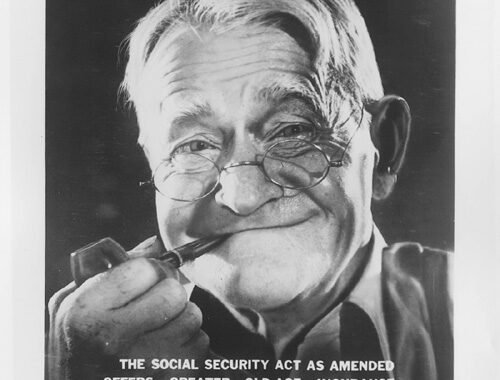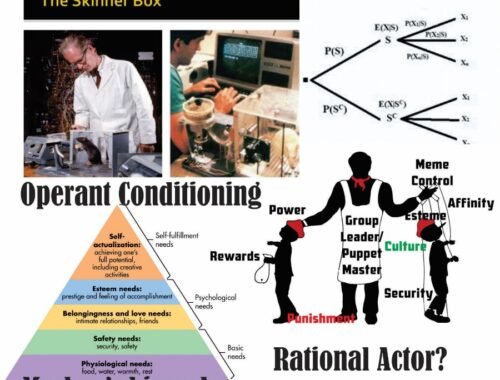
Reconstructing History, Part 5: The Education Institution and Creating History
Before we get too far into this discussion, let us look at the concept of “institution”. From an academic perspective, Ostrom and North provide two complementary definitions.
Elinor Ostrom, in her path-breaking book, Governing the Commons: The Evolution of Institutions for Collective Action, defines institutions as:
“Institutions” can be defined as the sets of working rules that are used to determine who is eligible to make decisions in some arena, what actions are allowed or constrained, what aggregation rules will be used, what procedures must be followed, what information must or must not be provided, and what payoffs will he assigned to individuals dependent on their actions (Ostrom, 1990).
Douglass North’s influential book Institutions, Institutional Change and Economic Performance is a key work in institutional analysis. In this book, North defines an institution as:
Institutions are the rule of the game in a society or, more formally, are the humanly devised constraints that shape human interaction. In consequence they structure incentives and human exchange, whether political, social, or economic. Institutional change shapes the way societies evolve through time and hence is the key to understanding historical change. (North, 2007 p. 3)
For practical purposes, institutions are collections of organizations, people, policies, and processes; united by a core common culture. The education institution is a collection of colleges and universities, schools and school districts, and the administrative bodies that develop and administer the policies and processes.
This does not mean that institutions are cohesive and monolithic. But a unifying purpose and cultural attributes tie them together. Education is a good example. Grade schools differ from middle schools, which differ from high schools, which differ from universities. A grade school in the inner city differs from a grade school in Appalachia. Even two grade schools in the same inner city can be different.
But they all have a unifying purpose, which is something like: “We teach our youth the life, social, and practical skills they need to be productive members of society.”
They also have unifying cultural values such as teaching, concern for students, and the value of learning.
I suspect this purpose and values were as true for a one-room schoolhouse a 150 years ago as they are in schools today. But what is different is the skills and interpreting the values, and an expanded role of “teacher” and “school”. In one dimension, these are radical changes, but in another, they are a continuation of the traditional aspects of a school’s function and a teacher’s job.
Teachers and schools have always transmitted cultural values and taught skills. I remember back in the 1960s in elementary school learning about George Washington chopping down a cherry tree and skipping a coin across the Potomac River. I remember my 7th grade Civic/social studies course teaching me about the taxes that were a cause of the American Revolution and how they shaped American government. I remember science and mathematics and the teachers who taught me. There was a clear transmission of values in school, based on traditional American values and an overarching culture. Even though I was a 3rd generation born citizen, I was 100% American and was taught American exceptionalism and values based on the Declaration of Independence and the Constitution that made a free and prosperous people.
Today, there is a mix of cultures in America. While my Eastern European great-grandparents maintained much of their culture in the home, they completely embraced the American culture that attracted them to this country. When WWII broke out, five of my great uncles fought, one earning a silver star. I am not sure that would happen today.
Today, schools embrace other cultures and teach their values and how the American culture is based on white privilege and discrimination. Now that the same culture they condemn has destroyed most of the aspects of racial discrimination, they teach “microaggressions” to keep the pot of racial unrest simmering. Whereas once we were taught the greatness of the founders and the power of capitalism, our children are now taught the founders were evil slaveholders and capitalism is a brutal tool of racism.
The role of our schools has also expanded greatly. They now feed and babysit our children. These and other roles have shifted from the parents to the schools. Some of these changes started with the Great Society and Head Start. But others are comparatively more recent. Hillary Clinton popularized the “it takes a village to raise a child concept” with her book and the Obama’s adopted it. The Clinton’s and Obama’s embraced this as true African wisdom, but western society has known this for centuries and use it. The difference between the traditional western version and the Clinton/Obama version is the “village” took on the dominant role in raising children, with the school as a focal point. This issue came to a head when the democratic candidate for governor in Virginia in 2021 essentially said parents had no role in what schools teach.
We may want to say this all happened recently since it is now in the open and parents are challenging this transition of the schools’ role and what they teach. But if we look at the radicalization of the students at our colleges and universities, that simply cannot be true. The education institution radicalized them starting in elementary school, long before they arrived at the universities. Sure, some students were radicalized in the 1960s, but they were nothing compared to the widespread radicalization we see today. And the K-12 system did not do it in the 1960s. It started at least as far back as Hillary Clinton’s It Takes a Village in 1996 as the education institution shifted its role and values.
The institution’s trappings and exterior are still there. But what it does and how it does it have shifted tremendously.
References
North Douglass C., Institutions, Institutional Change and Economic Performance, Cambridge: Cambridge University Press, 2007.
Ostrom Elinor, Governing the Commons: The Evolution of Institutions for Collective Action, Cambridge, UK: Cambridge University Press, 1990.






One Comment
Pingback: